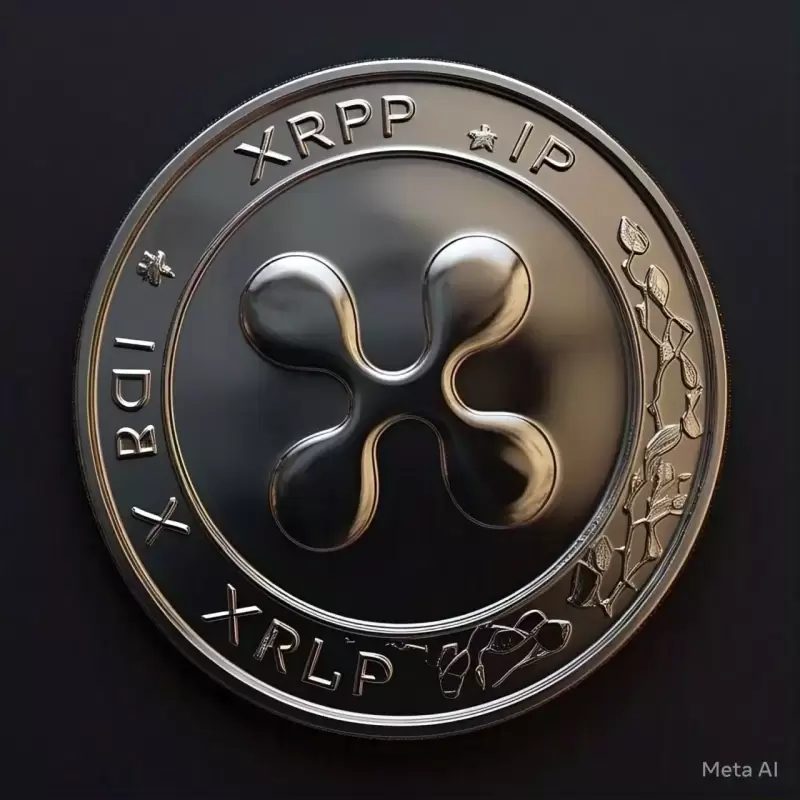 |
|
 |
|
 |
|
 |
|
 |
|
 |
|
 |
|
 |
|
 |
|
 |
|
 |
|
 |
|
 |
|
 |
|
 |
|
分散的物理基础架构网络(或Depin)代表了我们如何构建和运营现实世界基础架构的新范式。

Decentralized Physical Infrastructure Networks, commonly known as DePIN, represent a new paradigm in how we build and operate real-world infrastructure, shifting the focus from large corporations or government entities to community ownership and maintenance.
分散的物理基础设施网络(通常称为Depin)代表了我们如何构建和运营现实世界基础设施的新范式,将重点从大公司或政府实体转移到社区所有权和维护。
At its essence, DePIN is about converging physical infrastructure with decentralized networks. It works by enabling individuals to deploy real, physical hardware—such as wireless hotspots, sensors, servers, or other devices—and receive crypto tokens in return for providing useful services to the network. The blockchain acts as the public ledger and coordination layer, recording all contributions and usage of the service, handling token transactions, and enforcing the rules (often through smart contracts) that keep the network running fairly and transparently.
从本质上讲,Depin是关于将物理基础架构与分散网络融合。它通过使个人能够部署真实的物理硬件(例如无线热点,传感器,服务器或其他设备)并接收加密代币以换取为网络提供有用的服务,从而起作用。区块链充当公共分类账和协调层,记录服务的所有贡献和使用,处理令牌交易,并执行(通常是通过智能合约),以使网络保持公平,透明。
Key components of a DePIN include:
Depin的关键组成部分包括:
* Community-Run Hardware: Participants (who can be everyday people or small businesses) deploy physical nodes (e.g., antennas, routers, sensors) that provide a service (e.g., network coverage, storage space, sensor data) to users.
*社区经营的硬件:参与者(可以是日常人或小型企业)部署物理节点(例如,天线,路由器,传感器),向用户提供服务(例如,网络覆盖,存储空间,传感器数据)。
* Blockchain Coordination: A blockchain network keeps a tamper-proof record of all service activity and contributions, acting as a neutral manager. It tracks which node provided what service and when. Because the records are public and verifiable, participants can trust the system without a central authority.
*区块链协调:一个区块链网络可保留所有服务活动和贡献的防篡改记录,并充当中立的经理。它跟踪哪些节点提供了什么服务和何时。由于记录是公共和可验证的,因此参与者可以在没有中央权威的情况下信任该系统。
* Token Incentives: The network’s native crypto tokens align everyone’s incentives. Contributors earn tokens as rewards for providing services (like hosting a hotspot or sharing spare computing power), while users of the service might pay in tokens or spend tokens (or associated credits) to access the infrastructure. Tokens can also confer governance rights, letting the community vote on upgrades or policies.
*令牌激励措施:该网络的本地加密代币使每个人的激励措施保持一致。贡献者会获得代币作为提供服务的奖励(例如托管热点或共享备用计算能力),而该服务的用户可能会在令牌或支出代币(或相关信用额度)中访问基础架构。令牌还可以赋予治理权利,让社区对升级或政策进行投票。
* Decentralized Coordination: Decisions and growth happen from the bottom up. There is no single company controlling the network; instead, open participation means anyone who meets the basic requirements (e.g., buying a device and following the protocol) can join and contribute. This broad participation makes the network more resilient and often more geographically widespread than centrally planned systems.
*分散的协调:决策和增长是从自下而上的。没有控制网络的单一公司;取而代之的是,公开参与意味着满足基本要求的任何人(例如,购买设备并遵循协议)都可以加入并贡献。这种广泛的参与使网络比中央计划的系统更具弹性,并且通常在地理上更广泛。
In essence, DePIN applies this model of a peer-to-peer economy to infrastructure.
从本质上讲,Depin将这种对等经济的模型应用于基础设施。
For instance, visualize a “people-powered” wireless network. Individuals install wireless hotspots in their homes or offices, and these devices work together to form a crowd-sourced network that provides local coverage for internet and IoT data. The blockchain records each data delivery from a hotspot and automatically rewards the owner with tokens as compensation for providing coverage. The result is a public network built and maintained by its users, as opposed to a network created by a telecom giant.
例如,可视化一个“供电”的无线网络。个人在家里或办公室中安装无线热点,这些设备共同努力,形成一个众包网络,为互联网和物联网数据提供本地覆盖范围。区块链从热点记录每个数据传输,并自动奖励所有者用令牌作为提供覆盖范围的补偿。结果是由用户建立和维护的公共网络,而不是由电信巨头创建的网络。
This approach makes infrastructure more accessible, efficient, and resilient. There is no single point of failure, and the network grows where people find it useful.
这种方法使基础架构更容易获得,高效和弹性。没有单一的故障点,网络在人们发现它有用的地方生长。
DePIN has the potential to democratize infrastructure in the same way that Bitcoin and DeFi democratized finance, reducing reliance on monopolies or big intermediaries as communities fill service gaps themselves.
Depin具有将基础设施民主化的潜力,就像比特币和对财务民主化的方式相同,随着社区本身填补服务空白的填补,减少对垄断或大中介的依赖。
The contributors who help run the network are rewarded with tokens, which bootstraps growth—the more people join and contribute, the stronger the network becomes, which in turn attracts more users in a virtuous cycle. It also encourages innovation and local solutions—rather than one-size-fits-all infrastructure, different regions or groups can deploy what they need, when they need it, without waiting for corporate investment or government programs.
有助于运行网络的贡献者会获得令牌的奖励,即引导程序的增长 - 加入并贡献的人越多,网络变得越强,这反过来又吸引了更多的良性周期用户。它还鼓励创新和本地解决方案(与一定程度的基础架构相比,不同的地区或团体可以在需要时部署所需的东西,而无需等待公司投资或政府计划。
In the next sections, we’ll explore how DePIN principles are being applied across various sectors—from telecom and energy to mobility and mapping—with real-world projects leading the way.
在接下来的部分中,我们将探讨如何以现实世界中的项目领先于各个部门(从电信和能源到移动性和映射)在各个部门中应用原则。
1. Telecom and Wireless Networks
1。电信和无线网络
One of the most prominent use cases for DePIN is in telecommunications, particularly wireless internet and IoT connectivity. Traditional wireless networks, such as cellular data or WiFi hotspots, are provided by large telecom companies that build towers and infrastructure. DePIN projects are turning this model upside down by crowdsourcing coverage from the ground up.
DEPIN最突出的用例之一是电信,尤其是无线Internet和IoT连接。传统的无线网络(例如蜂窝数据或WiFi热点)由建造塔楼和基础设施的大型电信公司提供。 Depin项目通过从头开始覆盖众包的覆盖范围将这种模型颠倒了。
Participants can set up small wireless nodes in their homes or businesses, creating a decentralized communication network that anyone nearby can use. By contributing bandwidth and coverage, these participants earn crypto tokens as rewards. This acts as a mini service provider in the broadest sense of the word.
参与者可以在他们的房屋或企业中设置小的无线节点,从而创建一个分散的通信网络,附近任何人都可以使用。通过贡献带宽和覆盖范围,这些参与者获得了加密代币作为奖励。这在最广泛的含义上充当了迷你服务提供商。
The blockchain serves as the public ledger and coordinator, recording all contributions and usage fairly and transparently. It also enforces the rules of the network to keep it running smoothly.
区块链是公共分类帐和协调员,公平,透明地记录所有贡献和使用。它还强制执行网络规则以使其保持顺利运行。
Helium – The People-Powered Wireless Network
氦气 - 供电的无线网络
A leading example in this space is the Helium Network, which allows individuals to host low-cost wireless hotspots that provide connectivity for Internet of Things (IoT) devices (and more recently, for cellular data as well). In return, hotspot hosts earn Helium’s native cryptocurrency, HNT. This model has led to the rapid growth of a truly people-powered network.
这个领域的一个主要例子是氦网络,该网络允许个人托管低成本的无线热点,这些热点为物联网(IoT)设备(以及最近的蜂窝数据)提供连接。作为回报,Hotspot主持人赢得了Helium的本地加密货币。该模型导致了真正的人力网络的快速增长。
Helium became the world’s largest decentralized wireless network, with over 375,000 active hotspots deployed by everyday users around the globe. Each hotspot acts like a mini cell tower or WiFi router, and together they form a blanket of coverage for sensors, smart devices, and even phones in some areas.
氦气成为世界上最大的分散无线网络,全球日常用户部署了超过375,000个活跃的热点。每个热点都像迷你电池塔或WiFi路由器一样,一起在某些地区形成了传感器,智能设备甚至手机的覆盖范围。
Helium
氦
免责声明:info@kdj.com
所提供的信息并非交易建议。根据本文提供的信息进行的任何投资,kdj.com不承担任何责任。加密货币具有高波动性,强烈建议您深入研究后,谨慎投资!
如您认为本网站上使用的内容侵犯了您的版权,请立即联系我们(info@kdj.com),我们将及时删除。
-

-

- 象征性的黄金资本化已经超过了12亿美元的大关
- 2025-04-05 03:35:12
- 这种增长是由于黄金价格飙升和对区块链资产的兴趣日益增加所致。对金牌加密资产的兴趣日益加剧,是使存储现代化的更广泛运动的一部分
-

-

- Web3即将转变为第五档,并且当它这样做时,它不会等待任何人。
- 2025-04-05 03:30:12
- Qubetics是出于一个重大原因转向头部:这是第一个真正的Web3聚合器,具有现实世界中的资产标记市场
-

-

- 导航加密十字路口 - BNB的看跌困境和Binofi的上升诺言
- 2025-04-05 03:25:12
- 在加密货币的动态且通常是不可预测的领域中,市场情绪可能会迅速转移,从而既带来挑战和机遇。
-

-

- 投注的心理学:数字资产如何影响1WIN的玩家行为
- 2025-04-05 03:20:12
- 在线博彩和赌博的世界受到心理因素的深刻影响,包括冒险,奖励预期和财务决策。
-




























































